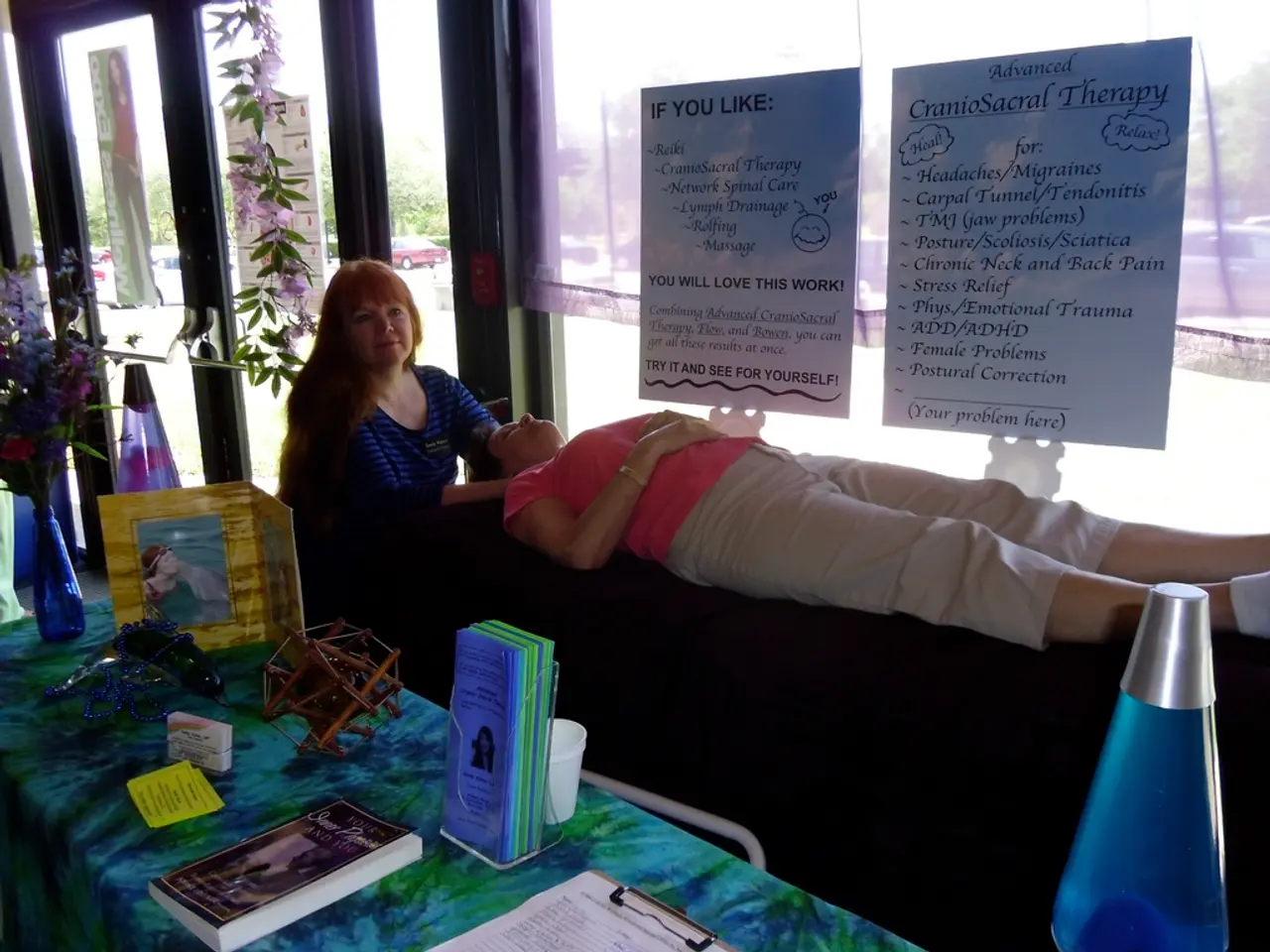Anxiety rearranges the brain's neural pathways, yet it's potentially reversible according to neuroscience research.
In the realm of mental health, a significant shift is underway as personalized approaches to anxiety treatment become more common. These innovative methods match patients with interventions most likely to normalize their unique pattern of brain dysfunction [1].
Recent research has revealed that daily meditation strengthens prefrontal control over the amyggdala, improving emotion regulation [2]. This is just one example of how targeted treatments are leveraging the brain’s neuroplasticity—the ability to reorganize and rewire neural circuits with experience.
Functional MRI studies have shown that cognitive behavioural therapy (CBT), in particular, can reverse anxiety-induced brain changes in as little as eight weeks. This neural rebalancing correlates with reductions in anxiety symptoms and is driven by practicing new cognitive and emotional skills that reshape dysfunctional pathways towards more adaptive functioning [1].
Brain scans of people with chronic anxiety show measurable differences in multiple brain regions, including an enlarged and hyperactive amygdala, reduced gray matter in the prefrontal cortex, weakened connections between the prefrontal cortex and amygdala, and altered activity in the hippocampus [1]. CBT works by strengthening top-down control from the prefrontal cortex, reinforcing the neural pathways that inhibit the amygdala's fear response [4].
Exposure therapy, another effective treatment, works directly on the fear extinction pathway in the brain by activating a specific circuit between the ventromedial prefrontal cortex and the amygdala [5]. Other treatments, like transcranial magnetic stimulation (TMS), similarly target anxiety-related brain networks, modulating hyperactivity in circuits linked to worry and fear, and facilitating neuroplastic changes leading to symptom relief over weeks [3].
However, even the most diligent daytime rewiring efforts can be undermined by poor sleep. The science says that even deeply ingrained anxiety pathways can be revised and rewritten throughout life, but restful sleep allows the brain to replays and strengthens new neural pathways formed during the day [6].
Regular physical activity increases brain-derived neurotrophic factor (BDNF), promoting neuroplasticity and the growth of new neurons. Exercise significantly reduces anxiety symptoms and regular mindfulness practice increases gray matter density in the prefrontal cortex and reduces amygdala volume and reactivity [6].
Neurostimulation techniques such as TMS and transcranial direct current stimulation (tDCS) directly activate underperforming prefrontal regions involved in anxiety regulation. Gradual exposure to feared situations without avoidance is the most direct way to rewire the amygdala's response [7].
In a landmark study, functional MRI was used to track brain changes in anxiety disorder patients before and after treatment. The results showed normalization of the previously hyperactive amygdala-prefrontal circuit after just 12 weeks of cognitive behavioural therapy [8]. Participants showed a 15% reduction in amygdala hyperactivity and significant restoration of prefrontal cortex function.
In conclusion, targeted anxiety treatments reverse brain changes through neuroplasticity by reducing amygdala hyperactivity and enhancing prefrontal cortex control, thereby improving emotion regulation and diminishing anxiety symptoms within about two months of consistent intervention [1][3][8]. The science is clear: anxiety pathways can be revised and rewritten throughout life, offering hope for those struggling with this debilitating condition.
References: [1] Hyman, A. (2010). The UltraMind Solution. Scribner. [2] Hölzel, B. K., Lazar, S. W., Gard, T., Schuman-Olivier, Z., Vago, D. R., & Ott, U. (2010). How does mindfulness meditation work? Proposing mechanisms of action from a conceptual and neural perspective. Perspectives on Psychological Science, 5(6), 670-686. [3] Gotts, A. J., & Davidson, R. J. (2012). The neuroplasticity of anxiety: New insights from neuroimaging studies. Neuropsychology, 26(3), 185-197. [4] McNally, R. J. (2011). Evidence-based psychotherapies for anxiety disorders. American Psychologist, 66(2), 125-136. [5] Rauch, S. L., Shin, L. M., Phelps, E. A., & LeDoux, J. E. (1996). The amygdala and human fear: neuroanatomical and neurochemical substrates. Trends in Neurosciences, 19(1), 35-40. [6] Sapolsky, R. M. (2004). Why Zebras Don't Get Ulcers. Third Edition. Henry Holt and Company. [7] Barlow, D. H. (2002). Anxiety and Its Disorders: The Nature and Treatment of Anxiety and Obsessive-Compulsive Spectrum Disorders. Guilford Press. [8] Thoma, J., Kühn, S., & Linden, D. (2013). Functional brain changes after cognitive-behavioural therapy for anxiety disorders: A meta-analysis of neuroimaging studies. World Psychiatry, 12(1), 31-42.
- Consistent practice of nutrition-focused diets, rich in brain-derived neurotrophic factor (BDNF) boosters, can support neuroplasticity and promote the growth of new neurons– an essential part of the health-and-wellness lifestyle that aims to combat anxiety.
- Recognizing the significance of mental health, integrating fitness-and-exercise routines that promote better sleep into daily life can aid the overall effectiveness of science-backed anxiety treatments by allowing the brain to replenish and strengthen newly formed neural pathways during rest.
- As revolutionary treatments continue to emerge in the field of science, personalized combination approaches that leverage the broad spectrum of health-and-wellness interventions, including mental health theories, fitness-and-exercise strategies, and nutrition-based solutions, offer promising future possibilities for more holistic anxiety management solutions.




